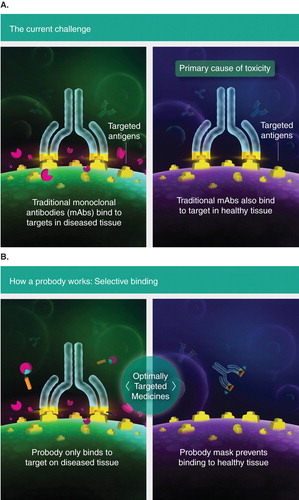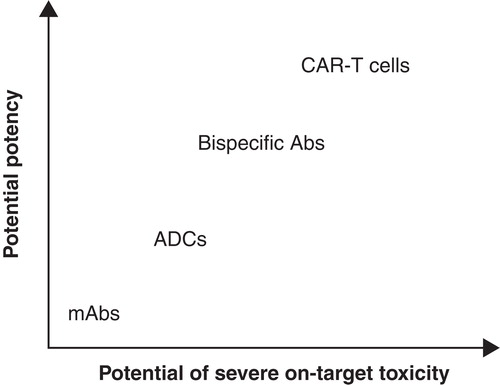Figures & data
Figure 1. Cartoon illustration of the antibody and Probody platforms. A. A conventional antibody binds to its target in both healthy and diseased tissues; selectivity requires differential expression of the antigen. B. The Probody consists of a fully biosynthetic construct in which a masking peptide (triangle) linked to a selective proteolytically cleavable linker is added to the N-terminus of the antibody light chain. In healthy tissues, the Probody remains intact and thus is blocked from binding to the antigen target. However, once the linker peptide is cleaved by proteases that are selectively activated in the diseased-tissue microenvironment, the masking peptide is released, allowing the active antibody to bind to its target, resulting in tissue-specific activity.

Figure 2. Proposed opportunities for empowered Probody™ formats. The potency and efficacy of antibodies can be enhanced through cytotoxic antibody–drug conjugates (ADCs), T-cell engaging bispecific formats, or chimeric antigen receptors expressed on T cells (CAR-T cells). However, these empowered formats have the potential for more severe on-target toxicity. It is this on-target, but off-tissue toxicity that can be mitigated using the Probody approach. Whereas the number of targets available for antibody-based approaches is limited by antigen expression in normal tissues, the number available for Probody approaches is predicted to be greater in each case.

